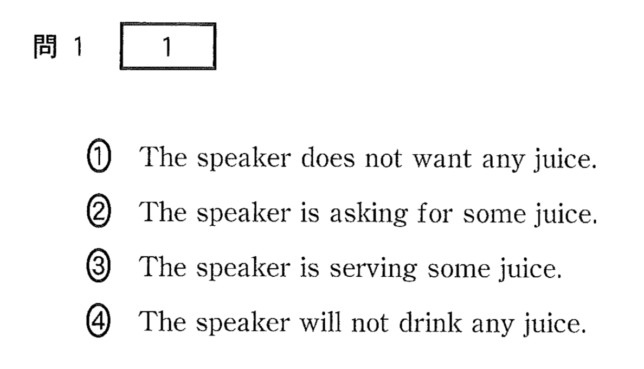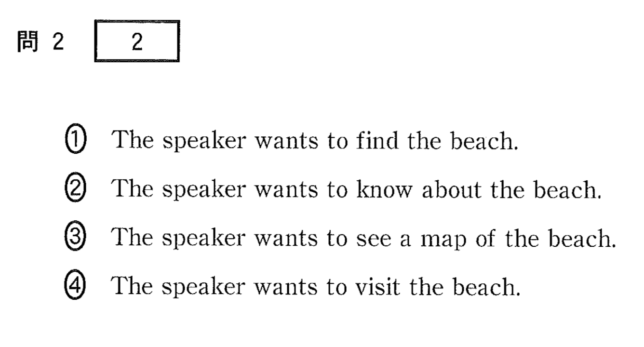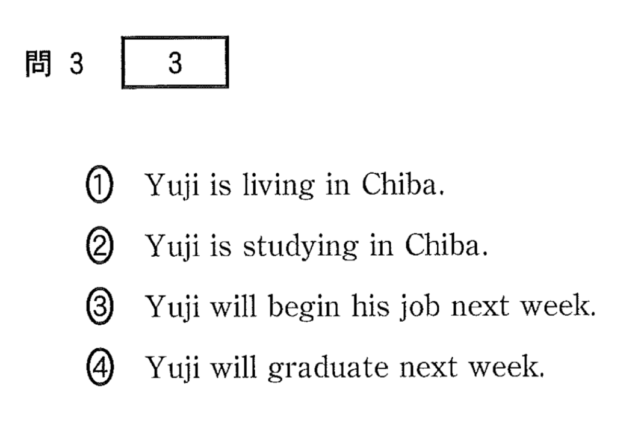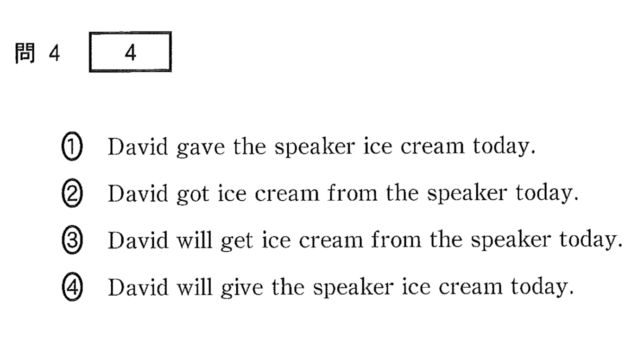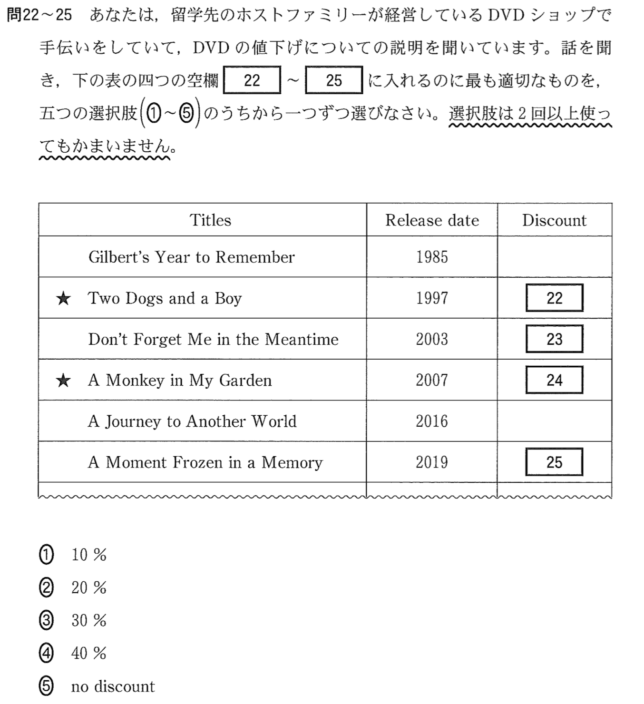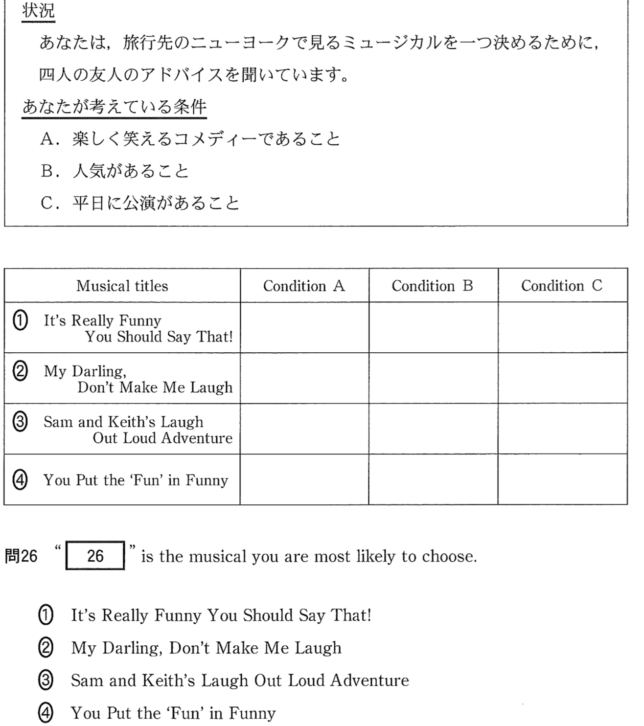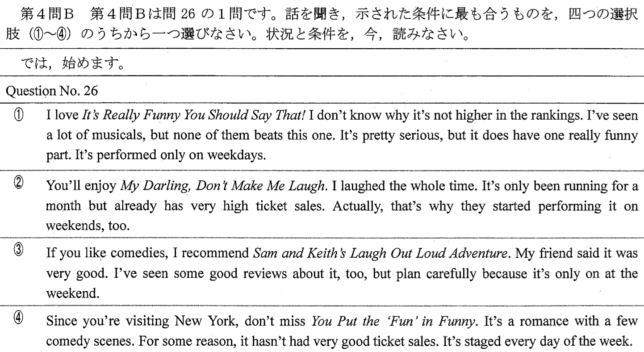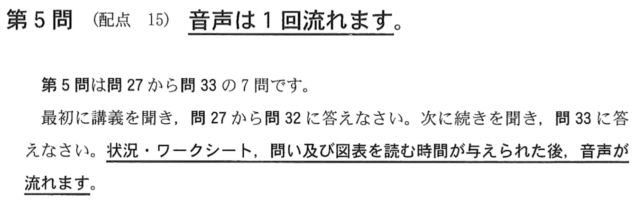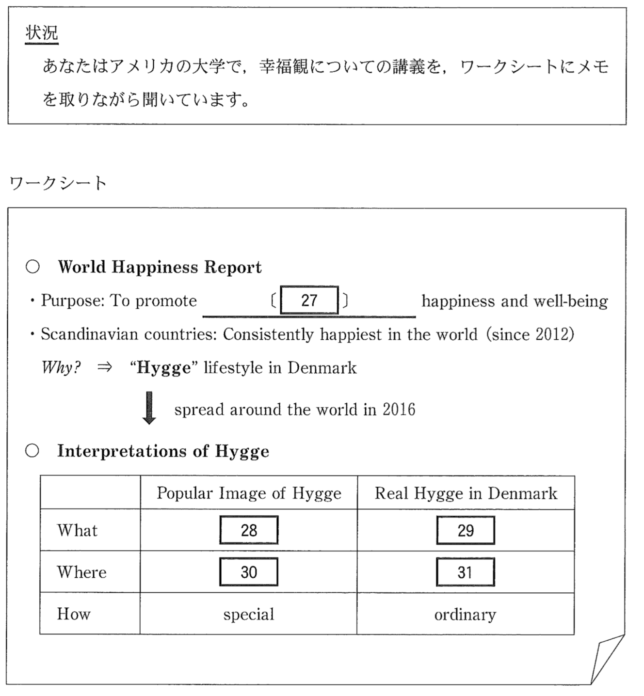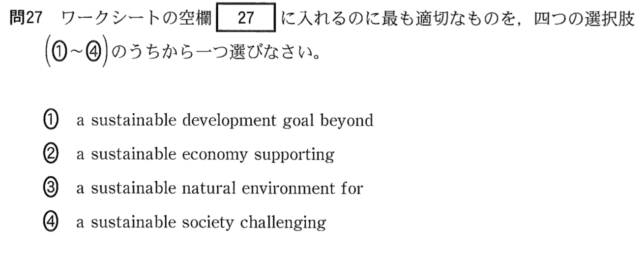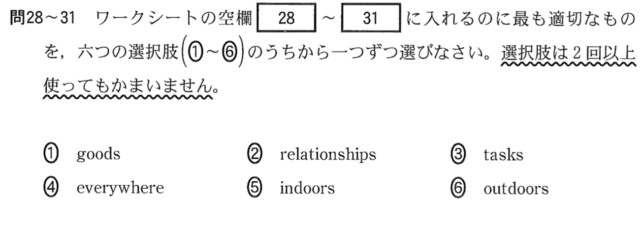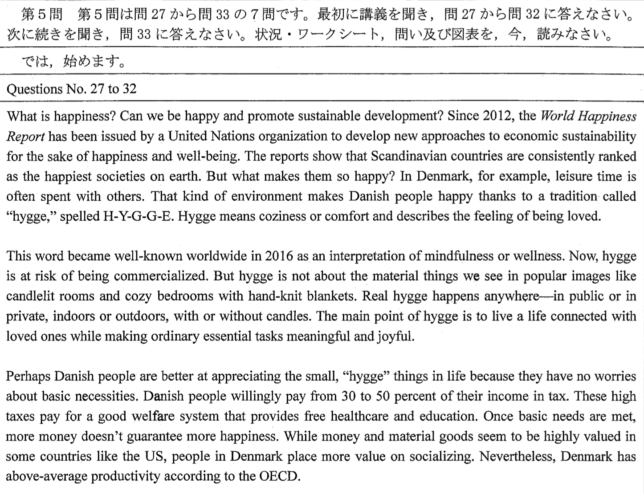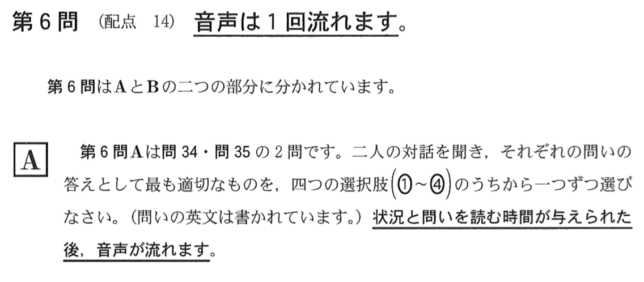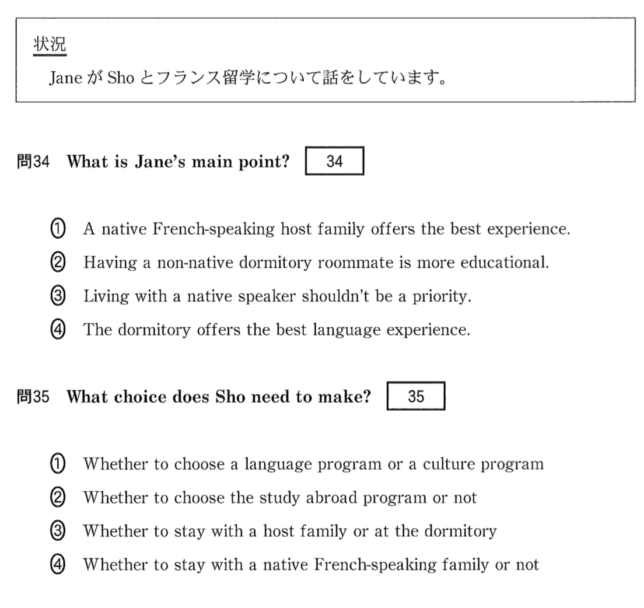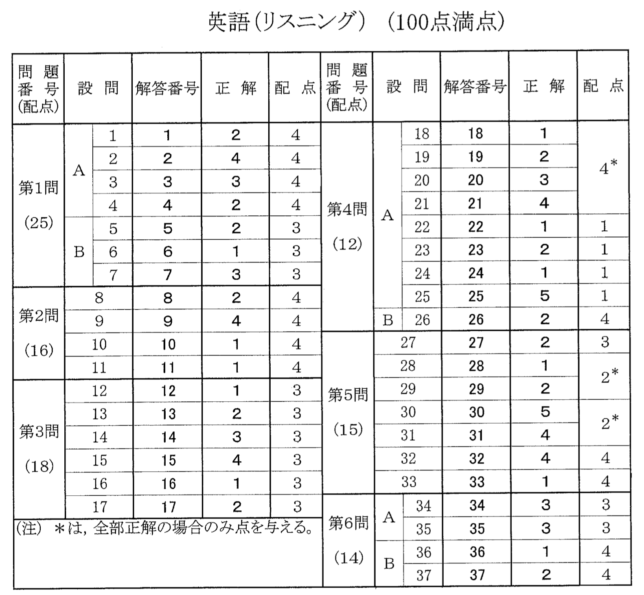Good morning everyone!
Today is Sunday, but it is a busy day here at school. We have an entrance test for elementary school students who want to join our school next year. Good luck! Also, our senior students are taking the second day of the center test. Today is math and science. Good luck to you, too!
Yesterday our seniors took Japanese, history, ethics, and English. The English listening test is different this year, so I thought you could try it for yourself. There are the questions and scripts below. See if you can get the answers by reading, and check at the bottom! This year, different questions are worth different points, so be careful. My comments will be in blue text.
First up, part 1A has four questions. Students just have to listen to sentence and choose the English that matches the situation.
These questions are a walk in the park. They are basically spoken grammar questions. Number 2 is matching “go” and “visit”. Number 3 is “To do ~, Yuji ~”. Number 4 is just recognizing give, gave, and got. I expect everyone got these right.
Next up, part 1B. Students have to listen to the script and choose the correct picture.
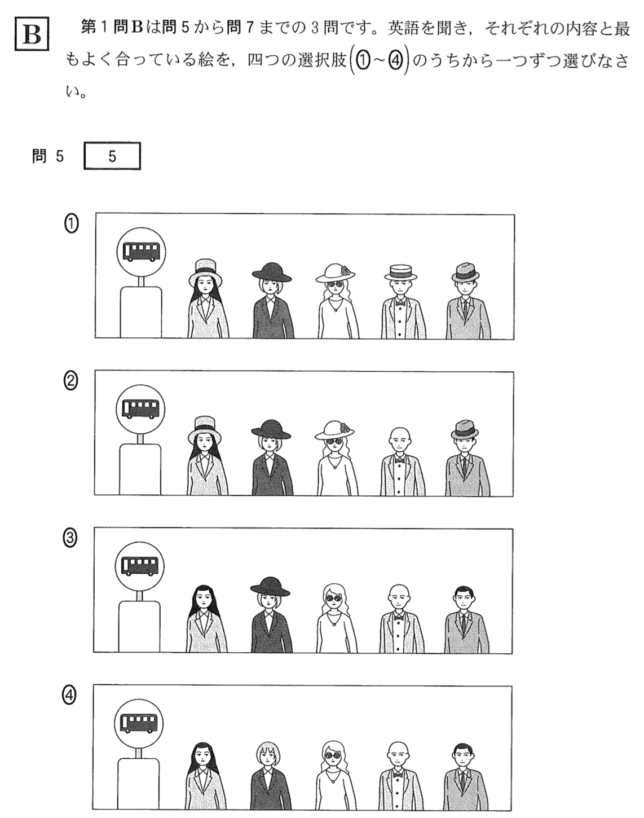

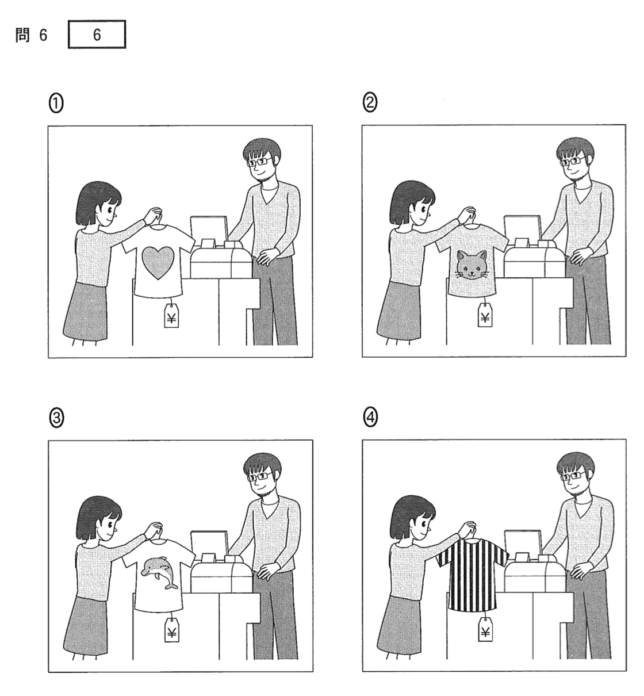

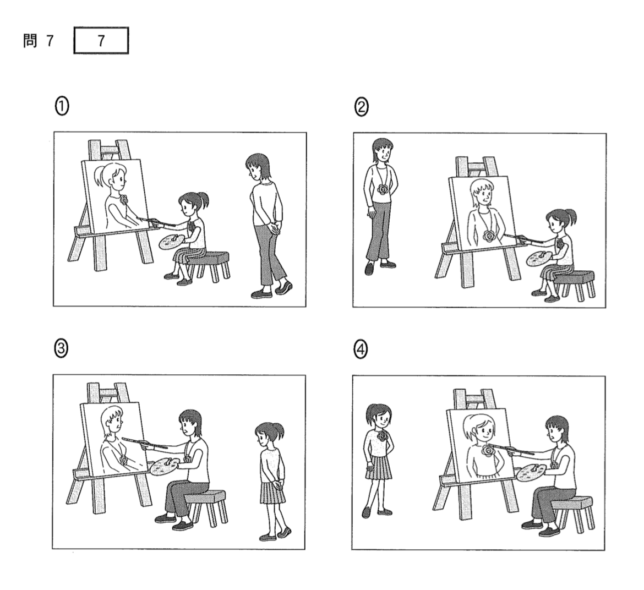
 I think these three questions were also easy to get. Number 5 you have to catch the word “Almost everyone”. Number 6 is about the word striped, and number 7 is realizing that “herself” refers to the mother.
I think these three questions were also easy to get. Number 5 you have to catch the word “Almost everyone”. Number 6 is about the word striped, and number 7 is realizing that “herself” refers to the mother.
The next questions are about listening for information in a conversation. The different part of this year’s test is that the question is spoken, at the end. It is a challenge to remember the information and then also catch the question. To do these questions, students should listen for the general theme and characters the first time, listen to the question, then find the information during the second listen. There is a Japanese sentence for each question that gives students a hint.
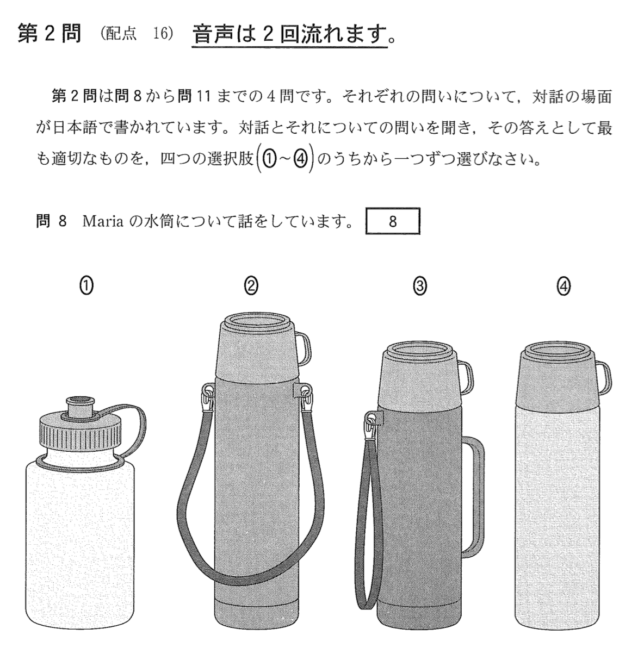
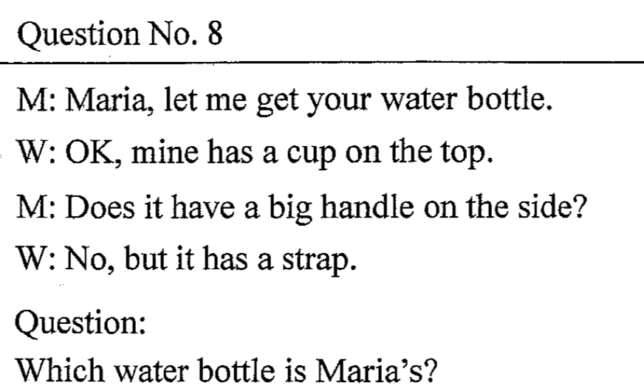
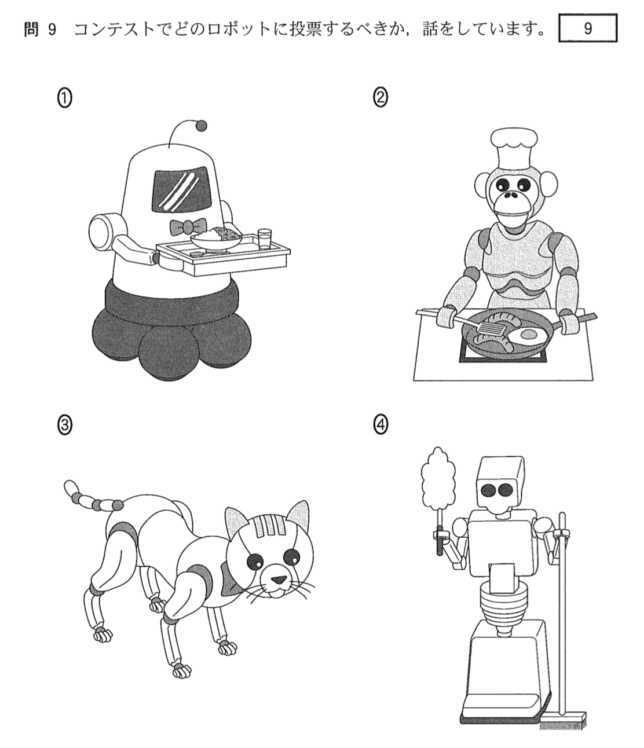
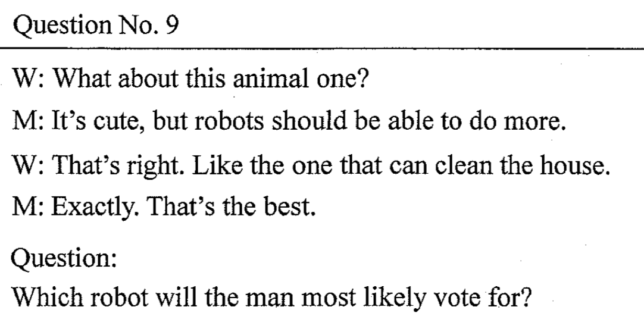
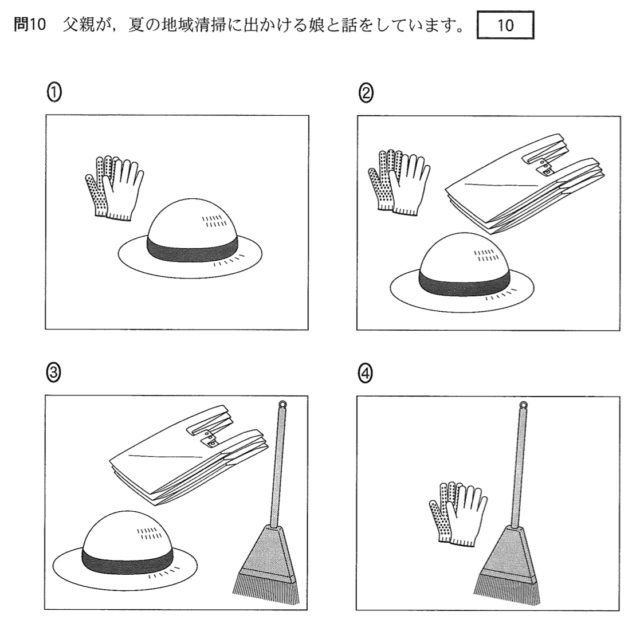
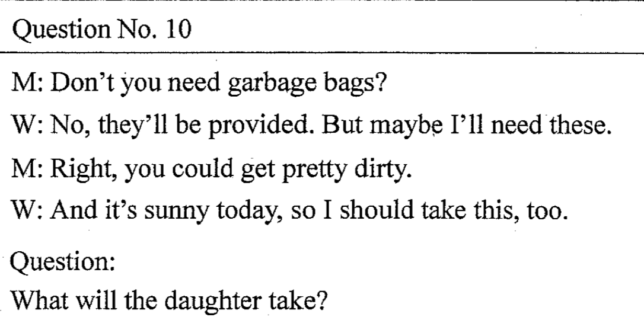
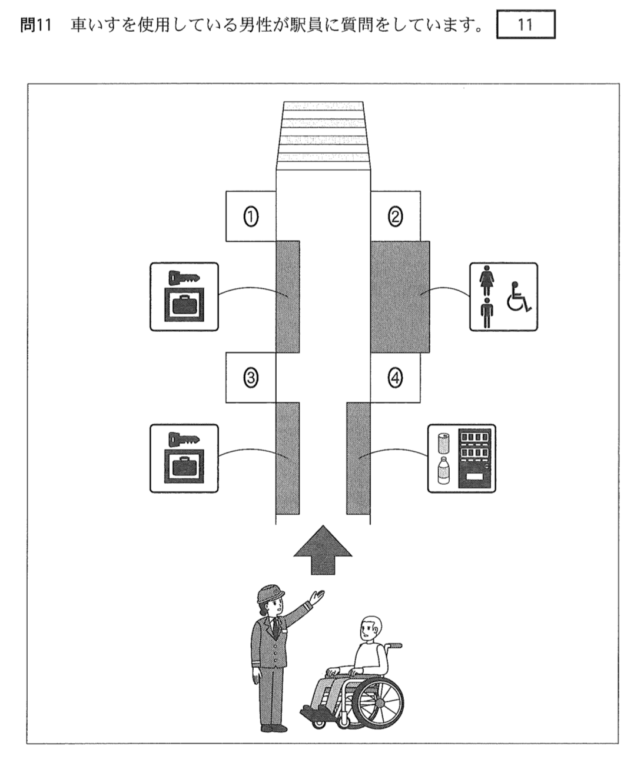
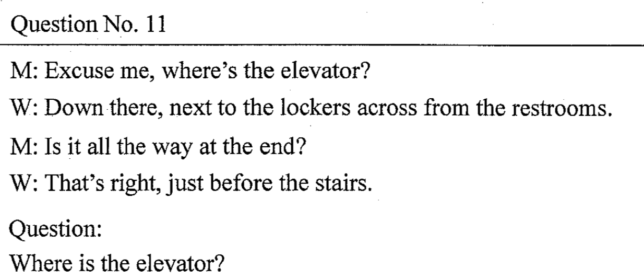 Answering these questions is often about crossing out the wrong answers as you listen. For example, with number 8, when you hear “it has a strap”, number 1 and 4 are out. Then you listen again, and you hear there is no handle, and you can choose the right answer. Or, looking at number 10, you don’t need bags so numbers 2 and 3 are out. Listen again and you need something if you get dirty or too much sun. You can choose the answer after that.
Answering these questions is often about crossing out the wrong answers as you listen. For example, with number 8, when you hear “it has a strap”, number 1 and 4 are out. Then you listen again, and you hear there is no handle, and you can choose the right answer. Or, looking at number 10, you don’t need bags so numbers 2 and 3 are out. Listen again and you need something if you get dirty or too much sun. You can choose the answer after that.
Next up, longer conversations where students have to find information. These are more traditional questions because the question is written down. There is also a Japanese hint. But, the conversations are longer, and can have twists that chance the meaning. Looking at question 12, the man says “I’d love to! Oh… no, wait…” and his plans change, and so does the answer. Listen to the end before you choose something!
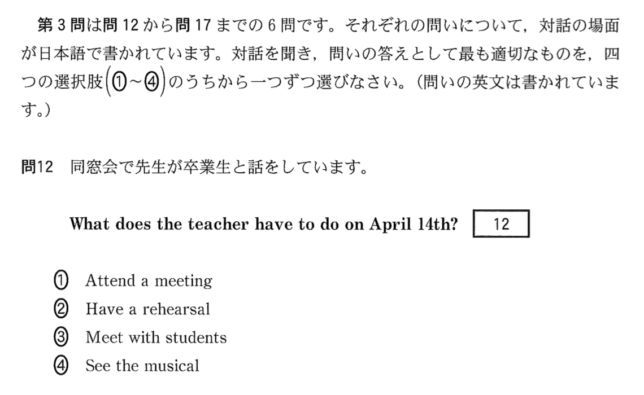

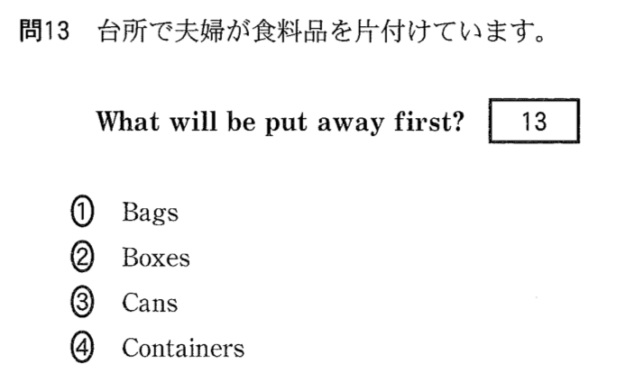

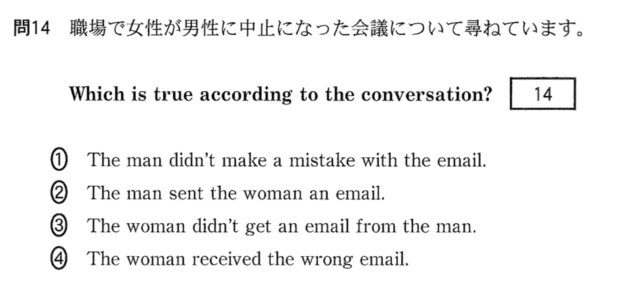
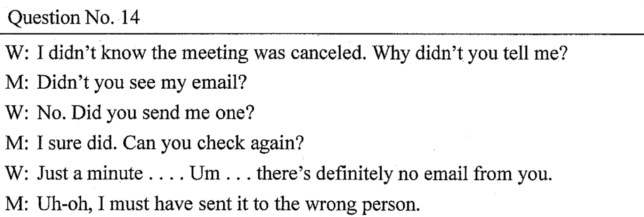
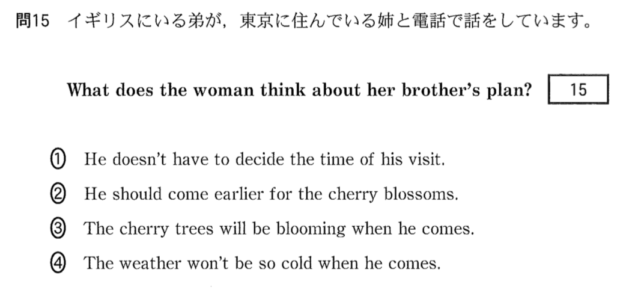

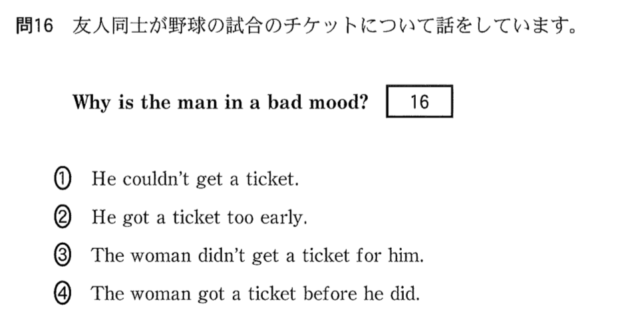

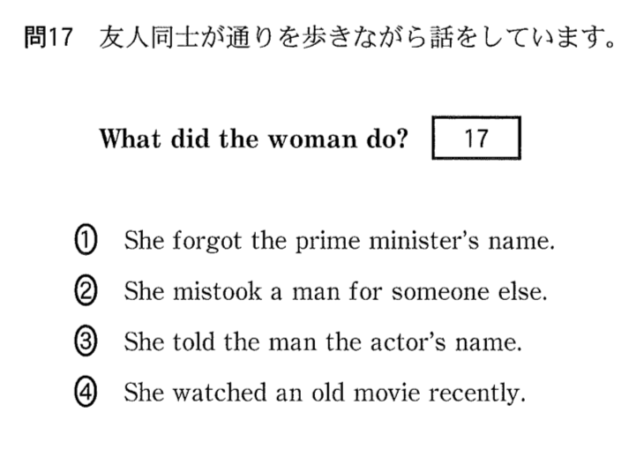
 One of the most important part of these questions is catching the correct character. What did the woman do? The woman didn’t get the email from the man. Keeping the characters straight gives you a hint on what to focus on.
One of the most important part of these questions is catching the correct character. What did the woman do? The woman didn’t get the email from the man. Keeping the characters straight gives you a hint on what to focus on.
Part 4A is similar to the old 3B questions. Listen for data and fill in the details.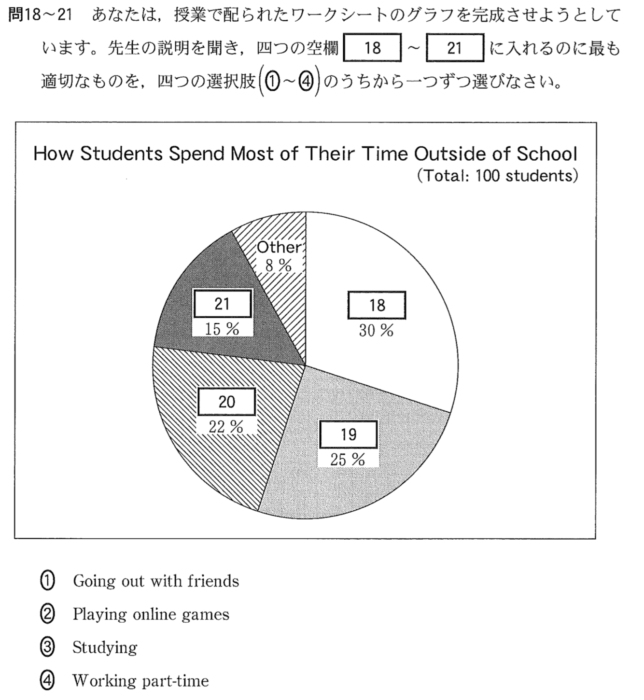

This question is tricky because of the sentence “exactly half that percentage…” halfway through. They are talking about the 30%, so you have to calculate quickly. “A quarter of all the votes” is also difficult to catch, but since there are 100 students it is just 25%. But, be careful, you have to get all four answers correct to get any points!
There is a lot of information in just a few sentences for this question. It is important to be able to take notes while you listen. Here is a hint, two of the questions have the same answer!
On to the next part…
This is a four point question, so be careful! Listen to the four pieces of advice about which play to watch, and take a memo about which play matches the three conditions you have. It looks very complicated, but just treat every condition like a O/X quiz and you can fine the answer.
Next up is a worksheet question. You can only listen one time, so make it count!
Questions 28+29 and 30+31 are a set, so you need to get them both correct to get the points. Again, taking notes while you listen is very important. Looking at the vocabulary words and taking a quick memo about them is helpful. Question 27 is a worksheet, so you are choosing the title for yourself, not from the script.
The next question is about data based on the same topic, but there is a new passage to listen to. The question is spoken, and is simply “What do you think?”
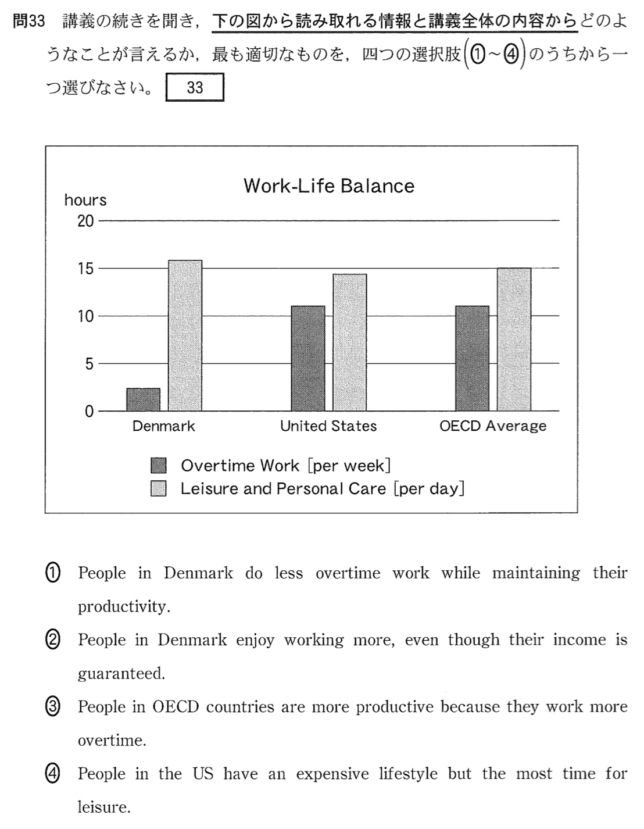
 Your answer should just show that you understand the graph and the topic of conversation. As a four point questions, this one is an easier one.
Your answer should just show that you understand the graph and the topic of conversation. As a four point questions, this one is an easier one.
We’re almost finished (wow this was a long test) and part 6 has two more traditional questions. One is a longer dialogue with questions, and the other is a four person talk that is similar to the group discussions on the older tests.

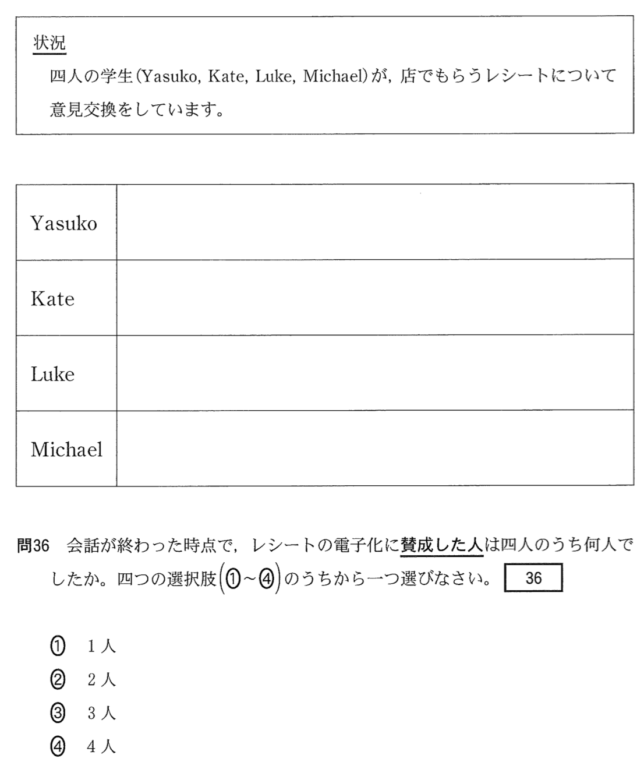
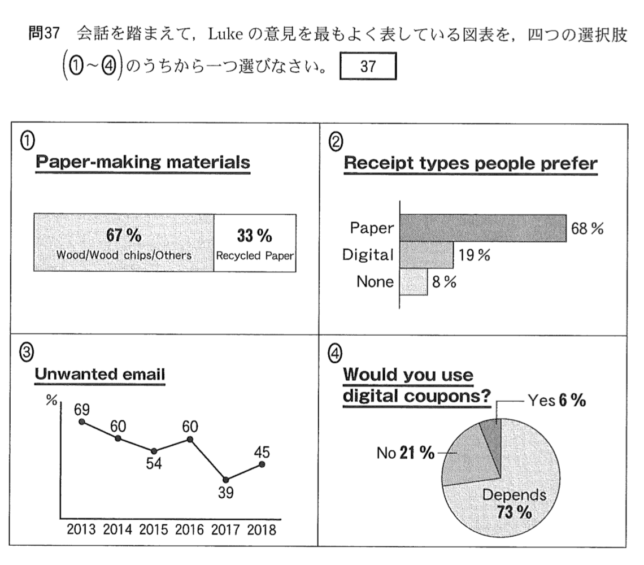
 If you want to take a look at the answers and see how you did, here is the scorecard. It is much different than previous years when every question was worth 2 points. Look at which questions are the most valuable. The total is out of 100 points now.
If you want to take a look at the answers and see how you did, here is the scorecard. It is much different than previous years when every question was worth 2 points. Look at which questions are the most valuable. The total is out of 100 points now.
To all our seniors, good luck on day 2!

